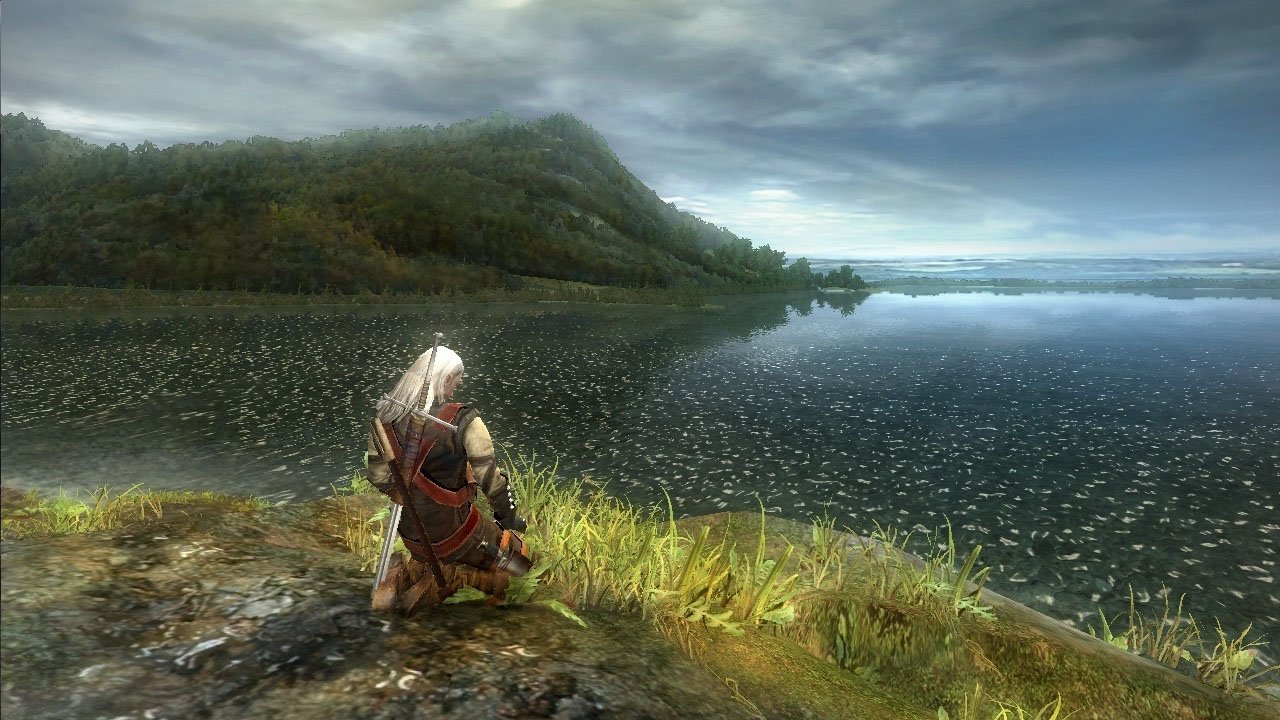Renowned Polish developer CD Projekt RED has quickly catapulted itself into the pantheon of RPG game developers over the past several years. The studio’s growing relevancy and pedigree is solely down to its excellent, high-fantasy series The Witcher. Since the first game’s debut in 2007, it has managed to introduce the book series (of the same name) it is originally based on to Western audiences. It made people take notice of Polish and other Eastern European developers as capable, and talented video game studios, and helped contribute to the Western RPG genre’s dominance this past decade.
The book series first started out as a smorgasbord of interesting short stories published on one of Poland’s most popular science fiction and fantasy magazines: Nowa Fantastyka. Author Andrzej Sapkowski’s first published work was simply called Wiedźmin, which translates into The Witcher. It was written for a contest Fantastyka held in 1986, and it won third place. Sapkowski then wrote four short stories in 1990 introducing the character Geralt. They further flesh out the mythology of The Witcher alongside a prequel story called The Road with No Return, which takes place dozens of years before the original stories.
Sapkowski would go on writing the next group of shorts, Sword of Destiny and The Last Wish, before finally penning the gargantuan book series, called The Saga, in 1994. There are six books in total, with the last one being a prequel titled Season of Storms. The books focus on the story of Geralt of Rivia, who is a witcher, and Ciri, the Child of Destiny. Witchers are monster hunters who develop supernatural abilities at a young age through special training.
Spakowski’s books have become so popular, especially in Poland and Russia, that they have since been adapted into a movie, card games, board games, and most significantly, into CD Projekt RED’s excellent video games. The first game was only released for PC, and introduced gameplay mechanics unique to the RPG genre. It isn’t turned-based, but is a more strategic take on real-time weapon combat. There are three fighting styles the player can choose from during combat: the fast style, which allows for faster attacks ideal for fighting fast enemies, the strong style, which deals more damage in slow strikes, and the group style, which allows the player to use sweeping attacks best used when being surrounded by a group of enemies.
Alchemy is another major part of gameplay, as the player can craft a plethora of potions, bombs, and oils for weapon crafting. But, arguably, the most interesting mechanic in the game is the time delayed decision-consequence system. The repercussions of players’ decisions are felt throughout significant portions of the game’s plot. It prompts the player to take more time thinking about their every choice, as there isn’t a save-reload option at all in the game. It’s all in the same vein of the Mass Effect games – there is an abundance of choices to make that change the overall story.
Like the books, the game follows main protagonist Geralt of Rivia, with the plot heavily borrowing from, and basing off of Polish and Slavic history and mythology. The first entry received favorable critical, and commercial receptions. However its sequel, which was released four years later in 2011 for both PC and Xbox 360, outperformed its predecessor in almost every category. Titled The Witcher 2: Assassins of Kings, the game managed to sell, alongside the first game, over 7 million units as of March 2014. It has won a panoply of game awards including best adaptation or use of a license, and best RPG of 2011.

The game was so successful that President Barack Obama mentioned it as one of Poland’s shining examples of the country’s growing relevancy “in the new global economy.” The sequel was developed using RED’s own game engine, unlike the first game which ran on BioWare’s Aurrora Engine.
It maintains the first game’s mythology, rich plot, characters, and world, with Geralt returning as the main character. The combat however received a significant change, with a deluge of improvements. It went from a sort of mini-game style in the first game, with a more fast-paced, arcade-like style that still maintains strategic elements. The player can lay traps, aim and throw ranged weapons. Geralt also has a much improved defensive and offensive style, and is able to wield a wide variety of weapons ranging from secondary weapons such as hatchets and shovels, to bombs, swords, traps, and armor.
The upgrade system is divided into four paths: a general training path, swordsmanship, which improves Geralt’s weapon wielding and combat, magic, which improves Witcher Signs, and alchemy. There is also a light stealth mechanic, and there are certain sequences in the game where the player if forced to remain silent. With the immense success that CD Projetk RED had with the second Witcher game, they quickly began work on a sequel for next-gen consoles, and PC.
The studio officially announced the game on February 5, 2013 for not only Xbox One and PC, but for PlayStation 4. This will be the first time the series makes an appearance on PlayStation consoles. The game is developed on REDEngine 3: the next evolution of CD Projekt RED’s own engine. The studio has also claimed that the game’s world will be “35 times bigger than The Witcher 2,” and is also described as being “20 times bigger than Skyrim.” Despite being delayed several times already, it has already won a hodgepodge of awards, including Best E3 2013, and 2014 game.
The Witcher is a prime example of a series on the rise. Every entry is bigger, and more successful than the other, and the third final game involving returning protagonist Geralt is arguably one of the most anticipated games of this year. To think, a small magazine competition has led to one of Poland’s most cherished cultural works.




